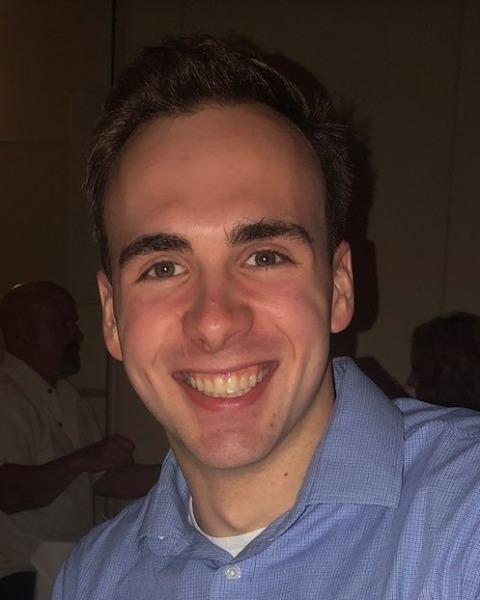Back
Telemedicine/EHR/Medical Informatics
Category: Abstract Submission
Telemedicine/EHR/Medical Informatics II
303 - Semi-Automatic Pediatric Multimodal Neuromonitoring Reports
Sunday, April 24, 2022
3:30 PM – 6:00 PM US MT
Poster Number: 303
Publication Number: 303.347
Publication Number: 303.347
Ethan J. Moyer, Drexel University, Philadelphia, PA, United States; Richard Moberg, Moberg Analytics, Philadelphia, PA, United States; Ethan Kuoch, Drexel University, North Wales, PA, United States; Brian Appavu, Phoenix Children's Hospital, Phoenix, AZ, United States; Brandon Foreman, University of Cincinnati College of Medicine, Cincinnati, OH, United States

Ethan J. Moyer
Director of Product Development
Drexel University
Philadelphia, Pennsylvania, United States
Presenting Author(s)
Background: Multimodal neuromonitoring is increasingly being used to provide a more global assessment of brain status. There is a need to produce daily reports based on this data to track progress similar to the reports routinely produced for continuous EEG monitoring. The creation of these reports proves to be extremely difficult and time-consuming in clinical use. Technological barriers need to be overcome to simplify the process and specifically for pediatric patients.
Objective: The objective of this work is to create a data path for the generation of pediatric multimodal neuromonitoring reports. This abstract highlights our efforts for semi-automatic generation of EMR-ready reports composed of both qualitative and quantitative neurometrics in addition to narrative-based information on the patient.
Design/Methods: In 2018, we surveyed reporting procedures for continuous EEG at three institutions (Mt. Sinai Medical Center, New York; Johns Hopkins, Baltimore; Thomas Jefferson University, Philadelphia) to assess methods used. Each site created its own reports and all sites used some type of automation either supplied by the EEG manufacturer’s software or by the electronic medical record. Subsequently, we designed automation concepts for generating multimodal neuromonitoring, and now, working with Phoenix Children’s Hospital, we are applying this work to the specific requirements of pediatric patients.
Prior work presented at the 2022 Society of Critical Care Meeting allows us to customize data pipelines using interoperable analytic modules. We use this system to generate many of the quantitative neurometrics which normally needed to be extracted manually from other software (correlations, etc).
Additionally, we have developed a standardized web-based report framework allowing us to customize specific form-based sections of reports using generalized components. Some of these components include section title, checkbox field, input field, table, etc. While some of these are reserved for quantitative metrics, others serve as input for qualitative metrics and patient narrative with neuroworsening indicators.
Results: Using the described methods, we created a data path for generated neuromonitoring reports in a semi-automatic fashion specifically designed for pediatric needs. Our deliverable is a prototype for this data path using designs inspired by Dr. Appavu based on his experience in multimodal reporting and pediatric reporting needs.Conclusion(s): Automation of neuromonitoring reports should increase their use and the value to pediatric patient care.
20210716_resume.pdf
Objective: The objective of this work is to create a data path for the generation of pediatric multimodal neuromonitoring reports. This abstract highlights our efforts for semi-automatic generation of EMR-ready reports composed of both qualitative and quantitative neurometrics in addition to narrative-based information on the patient.
Design/Methods: In 2018, we surveyed reporting procedures for continuous EEG at three institutions (Mt. Sinai Medical Center, New York; Johns Hopkins, Baltimore; Thomas Jefferson University, Philadelphia) to assess methods used. Each site created its own reports and all sites used some type of automation either supplied by the EEG manufacturer’s software or by the electronic medical record. Subsequently, we designed automation concepts for generating multimodal neuromonitoring, and now, working with Phoenix Children’s Hospital, we are applying this work to the specific requirements of pediatric patients.
Prior work presented at the 2022 Society of Critical Care Meeting allows us to customize data pipelines using interoperable analytic modules. We use this system to generate many of the quantitative neurometrics which normally needed to be extracted manually from other software (correlations, etc).
Additionally, we have developed a standardized web-based report framework allowing us to customize specific form-based sections of reports using generalized components. Some of these components include section title, checkbox field, input field, table, etc. While some of these are reserved for quantitative metrics, others serve as input for qualitative metrics and patient narrative with neuroworsening indicators.
Results: Using the described methods, we created a data path for generated neuromonitoring reports in a semi-automatic fashion specifically designed for pediatric needs. Our deliverable is a prototype for this data path using designs inspired by Dr. Appavu based on his experience in multimodal reporting and pediatric reporting needs.Conclusion(s): Automation of neuromonitoring reports should increase their use and the value to pediatric patient care.
20210716_resume.pdf
